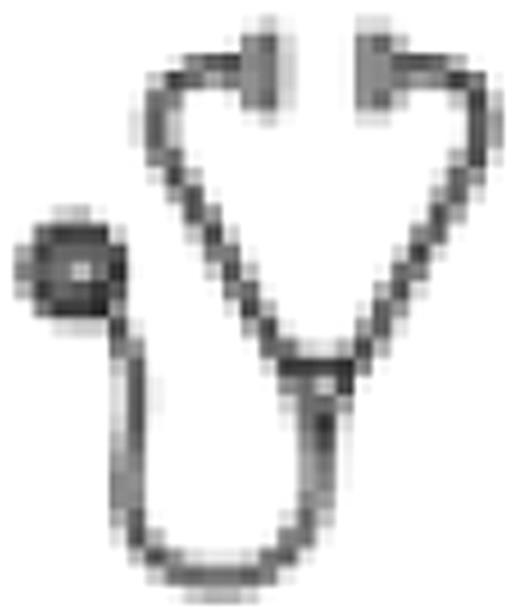Abstract
Initial reports that high dose imatinib results in better responses more rapidly than standard dose imatinib remain controversial. The German CML Study Group therefore compared imatinib 800 mg (IM 800) with standard dose imatinib +/- IFN (IM 400, IM 400 + IFN) in newly diagnosed, not pretreated CML with regard to molecular response at 12 months and survival in a randomized clinical trial. By April 30, 2009, 1026 chronic phase CML patients have been randomized (326 for IM 400, 338 for IM 800, 351 for imatinib + IFN). Comparison was for molecular and cytogenetic remissions, overall (OS) and progression free (PFS) survival and toxicity. 1015 patients were evaluable at baseline, 904 for survival analysis (294 for IM 400, 286 for IM 800, 324 for IM 400+IFN), 790 for cytogenetic (analysis of at least 20 metaphases required) and 823 for molecular response. The three treatment groups were similar regarding median age, sex, median values of Hb, WBC, platelets and distribution according to the EURO score. Median follow-up was 25 months in the imatinib 800 mg arm and 42 months in the imatinib 400 mg +/-IFN arms. The difference is due to the fact that at first the IM 800 arm was designed for high risk patients only and opened up to all risk groups in July 2005. The median daily doses of imatinib were 626 mg (209- 800 mg) in the IM 800 arm and 400 mg (184- 720 mg) in the IM 400 +/- IFN arms. Of 218 patients receiving imatinib 800 mg and evaluable for dosage at 12 months, 100 (45.9%) received more than 700 mg/day, 27 (12.4%) 601-700 mg, 37 (17.0%) 501-600 mg, 48 (22.0%) 401-500 mg and only 6 (2.8%) 400 mg/day or less. The cumulative incidences at 12 months of complete cytogenetic remission (CCR) were 52.3%, 64.9% and 50.6%, and of major molecular remission (MMR) 30.2%, 54.3% and 34.6% with IM 400, IM 800 and IM 400 +IFN, respectively. The cumulative incidences of achieving CCR and MMR with IM 400, IM 800 and IM 400+IFN at 6, 12, 18 and 24 months after start of treatment are summarized in the table.
| Time after start . | Cumulative incidences of achieving a . | |||||||
|---|---|---|---|---|---|---|---|---|
| CCR (%) . | MMR (%) . | |||||||
| IM400 n=259 . | D . | IM800 n=241 . | IM400+IFN n=290 . | IM400 n=267 . | D . | IM800 n=261 . | IM400+IFN n=295 . | |
| 6 mo | 22.7 | 12.4 | 35.1 | 18.4 | 6.4 | 11.8 | 18.2 | 6.2 |
| 12 mo | 52.3 | 12.6 | 64.9 | 50.6 | 29.0 | 23.1 | 52.1 | 34.3 |
| 18 mo | 69.3 | 6.7 | 76 | 70.8 | 48.1 | 18.9 | 67.0 | 55.4 |
| 24 mo | 78.3 | 6.3 | 84.6 | 77.6 | 63.3 | 14.1 | 77.4 | 63.8 |
| Time after start . | Cumulative incidences of achieving a . | |||||||
|---|---|---|---|---|---|---|---|---|
| CCR (%) . | MMR (%) . | |||||||
| IM400 n=259 . | D . | IM800 n=241 . | IM400+IFN n=290 . | IM400 n=267 . | D . | IM800 n=261 . | IM400+IFN n=295 . | |
| 6 mo | 22.7 | 12.4 | 35.1 | 18.4 | 6.4 | 11.8 | 18.2 | 6.2 |
| 12 mo | 52.3 | 12.6 | 64.9 | 50.6 | 29.0 | 23.1 | 52.1 | 34.3 |
| 18 mo | 69.3 | 6.7 | 76 | 70.8 | 48.1 | 18.9 | 67.0 | 55.4 |
| 24 mo | 78.3 | 6.3 | 84.6 | 77.6 | 63.3 | 14.1 | 77.4 | 63.8 |
MMR at 12 months was reached faster with IM 800 than with IM 400 (p=0.0003) or IM400+IFN (p=0.0131). Optimal molecular response (OMR=<0.01% BCR-ABL according to the international scale) was reached with IM 800 after a median of 31.3 months vs. 47.5 and 42.5 months with IM 400 +/- IFN. Also CCR was reached faster with IM 800 (p<0.01). The more rapid achievement of MMR with IM 800 was observed in low and intermediate risk patients with little or no difference in high risk patients. In an analysis “as treated” patients receiving more than 600 mg/day reached remissions faster than those receiving lower dosages (CCR after a median of 7.8 vs. 8.9 months, MMR after a median of 10.4 vs. 12.9 months). At the time of this evaluation, OS (92% at 5 years) and PFS (88% at 5 years) showed no difference. Type and severity of adverse events (AE) at 12 months did not differ from those expected (all grades and grades III/IV). Hematologic (thrombocytopenia 7% vs. 4%) and non-hematologic AEs (gastrointestinal 35% vs. 15-24% and edema 29% vs. 16-19%) were more frequent with IM 800, fatigue (14% vs. 7-13%) and neurological problems (15% vs. 6-7%) more frequent with IM 400 + IFN (all grades). These data show a significantly faster achievement of MMR at 12 months with IM 800 as compared to IM 400 +/-IFN. So far, this faster response rate did not translate into better OS or PFS. Hence IM 400 should still be considered as standard of care. With some individual dose adjustments tolerability of IM 800 was good. Longer observation is required to determine whether this more rapid achievement of MMR and CCR will have a long term impact or not.
German CML Study Group:Deutsche Krebshilfe: Research Funding; Novartis: Research Funding; European LeukemiaNet: Research Funding; Kompetenznetz Leukämie: Research Funding; Roche: Research Funding; Essex: Research Funding.

This icon denotes an abstract that is clinically relevant.
Author notes
Asterisk with author names denotes non-ASH members.

